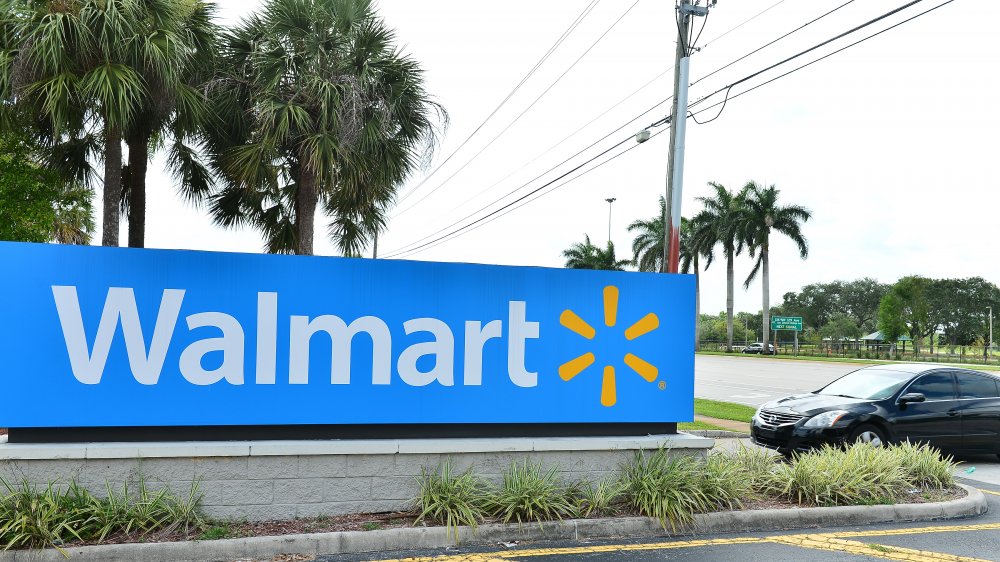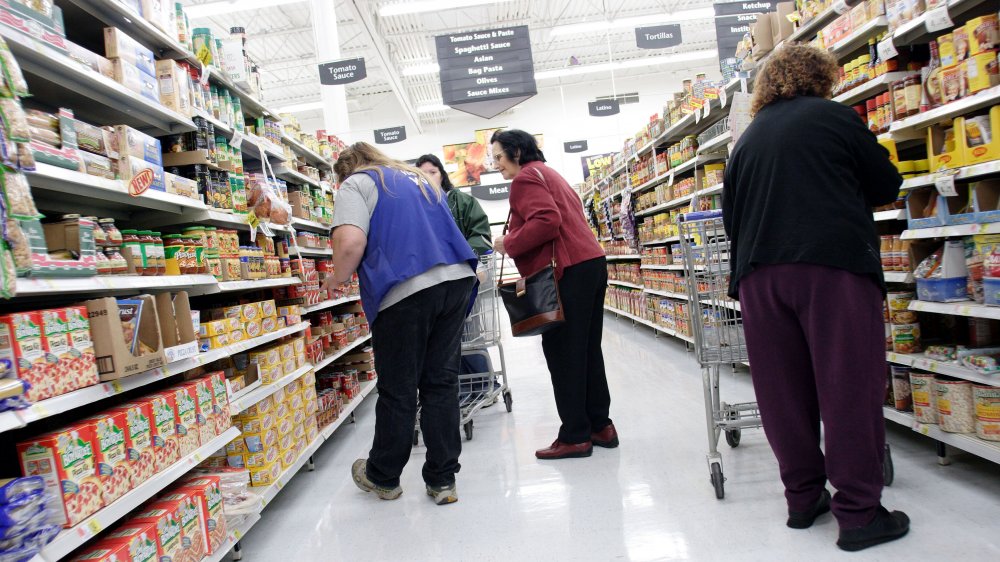The Real Reason Walmart Is Redesigning Its Stores
On September 30, CNN reported on Walmart's massive redesign that will affect 200 stores by the end of 2020, and a further 1,000 by the end of 2021. Features of this new look will include more open spaces (a bonus for shoppers during the coronavirus), larger signage inspired by airports, and contactless payments. They are also pushing for more shoppers to download the Walmart+ app to help navigate the new layouts.
For Fast Company, Walmart's redesign is more poignant. It represents the death of browsing. Items are now gathered under types instead of lying strewn throughout the store, and bigger and clearer signs will direct you to exactly where you need to go: These signs match up with the exact categories and icons you'll also find inside the surprisingly great Walmart app. That, in fact, is the whole goal of the redesign: to merge the app experience with the experience of going through the store in an utterly seamless manner. Even the airport interior style is used to drive customers directly to where they need to go without wasting their time or "cognitive load."
As the redesign is meant to fully facilitate using Walmart+, it makes sense that the benefits of the app revolve around shopping for groceries. For $12.95 a month or $98, Forbes explains, you get unlimited same-day shipping, discounts on gas, and get to use the newly added contactless payment systems. For regular customers at Walmart, using it makes perfect sense.
Walmart's grand design
These changes are all part and parcel of operating a business, but aspects of these changes, such as creating an app for a discount department store, speak to an ulterior motive in Walmart's redesign. A couple of days after Walmart's announcement, CNET reported on what may be behind these changes: Amazon. They note that Walmart+ serves as the beginning for an assault on Amazon Prime's monopolistic hold on the e-commerce subscription market. However, when asked by CNET, Janey Whiteside, Walmart's chief customer officer, denied any such plans: "[Right] now, getting [essential supplies like toilet paper and hand sanitzer] delivered to your door so you don't have to go out, or stand potentially in the line or mask up, is incredibly important to be able to focus on ... the 15 other things that we're all trying to deal with through the pandemic." Maximizing the economy of movement has always been a core part of Walmart's strategy, as Fortune notes, so introducing an app to increase efficiency is simply a logical step.
However much Whiteside denies it though, Walmart has still pursued a surprisingly aggressive strategy. A week before the redesign's announcement, Walmart also announced that it would introduce its own fashion brand, Free Assembly. Between this and the streamlining of Walmart's stores and apps, it certainly seems that Walmart has at least set itself up as an alternative to Amazon Prime, if not a direct competitor. However, their customer bases will probably vary dramatically.

